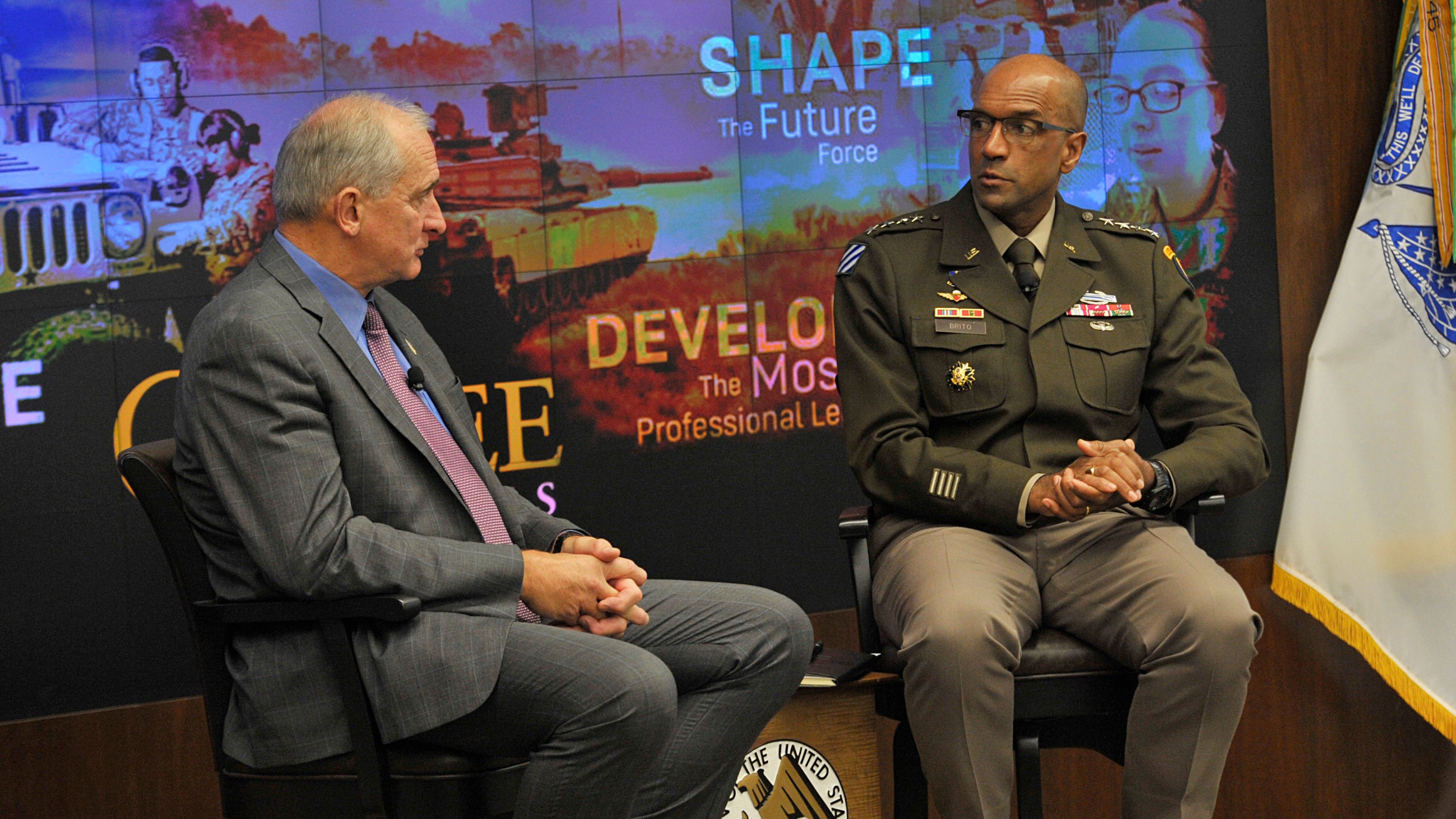People Give the Army its ‘Asymmetric Advantage’
People Give the Army its ‘Asymmetric Advantage’

Building soldiers and leaders of character and reinvigorating the profession of arms are critical efforts for the Army as it transforms for the future, the commander of Army Training and Doctrine Command said.
“Strengthening the profession of arms defines what we’re all about,” Gen. Gary Brito said Sept. 20 during a breakfast hosted by the Association of the U.S. Army as part of its Coffee Series.
“Soldiers and leaders of character, commitment and competency share a common purpose—a culture … built on trust of each other, cohesion, respect. All that’s important,” he said. “If you don’t have all that together, if we don’t move together, it will erode our warfighting capability.”
Brito, who took command in September 2022, said gaining that professionalism is not only a matter of education and leader development. It also requires “mastering the basic blocking and tackling at echelon, at every skill set.”
“It’s ensuring there are no gaps, no deficiencies at delivering a combat-ready force through education, leadership development, … which is our asymmetric advantage over all our adversaries,” Brito said.
Such professional development, he said, begins with the youngest privates. In a new initiative, drill sergeants will begin training basic trainees to operate in squads in round-robin training that also places them in collective training scenarios. “So, when they graduate or go with a unit, they’ve operated in a team, in a squad, and they see the value of being part of a cohesive team,” Brito said.
Addressing the recruiting challenges that have kept the Army from bringing in the number of soldiers it needs to fill the ranks, Brito said he remains optimistic and sees the “acute crisis as an opportunity” to build on the successes that have “made a big difference over the past year.”
In addition to a handful of high-profile recruiting initiatives, including the Future Soldier Preparatory Course, which helps service-eligible individuals meet the Army’s academic and physical standards and qualify to serve, Brito said the Army must adapt to the way young people communicate and engage.
“We need to adapt to the young men and women of America,” he said. “The 18- to 20-year-old of today might be a little different than when I was [that age]. We just have to accept that [and] the way they learn, their level of physical fitness, their lifestyle, and yet infuse those opportunities to ensure we have a force that we need to have.”
To dispel misconceptions about service in the Army, Brito said the Army “has improved a lot over the past year” in translating complicated MOS codes into plain language that resonates with young people, parents, school counselors and other influencers, and showcasing educational and other benefits.
An expansion of Junior ROTC programs also is underway, though it’s not a quick process, he said, as there are budgeting considerations, support from schools and the need for a cadre of qualified instructors.
Brito said the Army is also looking at other service-eligible populations, such as athletes or people who have higher education and may be in the labor market. “How do we showcase the military? We’re a learning organization … we adapt [through] marketing, education and reconnecting to America,” Brito said.

